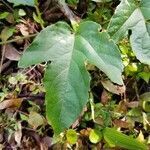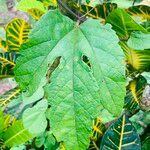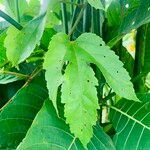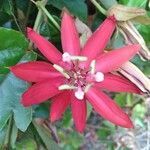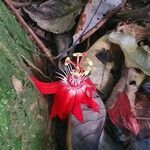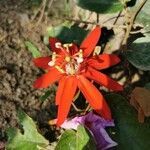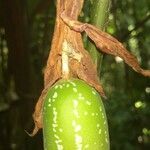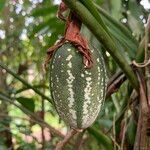A climbing plant which keeps growing from year to year. The stems have rust coloured hairs. The leaves are deeply 3 lobed. They are 13-18 cm long. There are teeth around the edge. The flowers occur singly. They are 12-16 cm across. The flower petals are bright red. They are pointed. The sepals have needle like bits at the tips. The fruit are mottled green and white and are round. They are 4-5 cm across.
Glands at base of petiole; flowers c. 10 cm ø, red; plant ferruginous-tomentose; fruit ovoid, c. 5 cm long.
